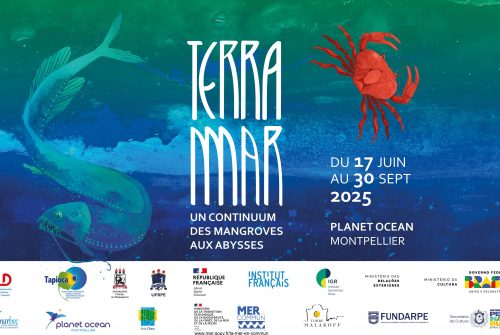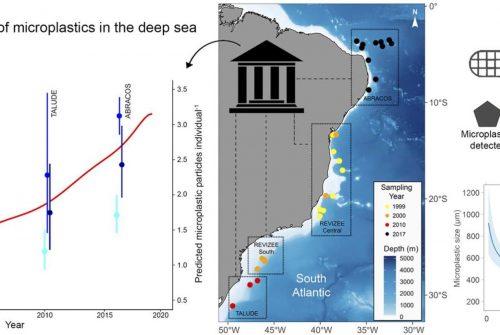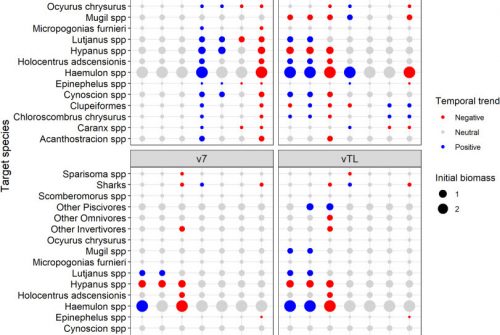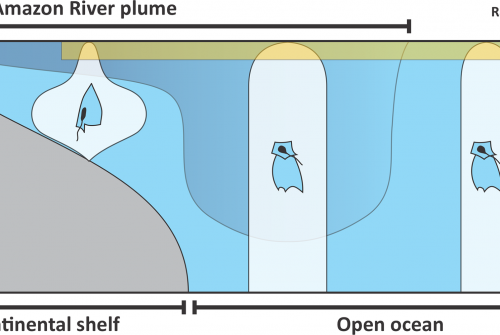
In western boundary current systems (WBCSs), strong currents flow coastward carrying oceanic water masses and their associated planktonic fauna. Variation in the intensity of these currents and in the continental runoff may affect the dynamic interplay between oceanic and coastal communities. In addition, changes in the continental runoff and the thermohaline structure modulate the primary production, adding complexity to the dynamics of these oligotrophic systems. These dynamics likely shape the planktonic cnidarian communities. To further understand such relationships, we used a comprehensive dataset encompassing samples collected above the shelf and slope and around oceanic seamounts and islands of the Fernando de Noronha Ridge in the western tropical South Atlantic, in two seasons characterised by distinct thermohaline structure and circulation patterns. Results show that in the tropical South Atlantic and, likely, other western boundary systems with narrow continental shelves, coastward currents spread oceanic waters and their associated cnidarian species over the continental shelf. However, while both coastal and oceanic communities co-occur when the continental runoff is notable, oceanic species dominate almost the entire shelf during the dry season characterised by a stronger boundary current intensity. We also conclude that when the mixed-layer depth and associated nutricline are shallower, the enhanced primary productivity supports larger populations of planktonic cnidarian species through a bottom–up control.
DOI: https://doi.org/10.5194/os-18-1763-2022
Reference
Tosetto E.G., Bertrand A. Neumann-Leitão S., Silva BB, Nogueira Júnior M. 2022. Planktonic cnidarian responses to contrasting thermohaline and circulation seasonal scenarios in a tropical western boundary current system. Ocean Science, 18: 1763–1779, 2022.








